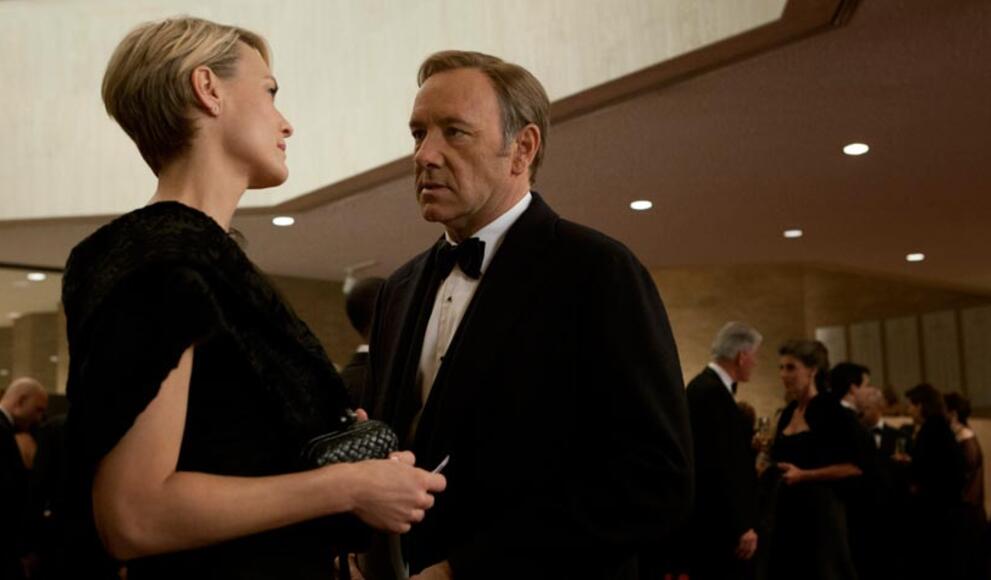W Network Helped Kate Leonard '12 Become Part of Cultural Phenomenon

Over Presidents Day weekend, many Netflix subscribers and political junkies dove into the second season of House of Cards, the highly addictive series about behind-the-scenes political scheming in Washington, D.C. For Kate Leonard ’12, it represented months of hard work behind the scenes on the show itself.
House of Cards tells the story of Congressman Frank Underwood, his wife Claire, and their Machiavellian pursuit of power in the capital. An American adaptation of a series of British novels and subsequent BBC miniseries, the series is praised for its plot twists, clever dialogue, and portrayal of a dysfunctional capital city. It features a star-studded cast, including Kevin Spacey (The Usual Suspects) and Robin Wright (The Princess Bride), and an acclaimed production team, including showrunner Beau Willimon (The Ides of March), Jodie Foster (The Silence of the Lambs), and David Fincher (The Social Network).
Leonard majored in cinema and media studies, and pursued summer internships at television festivals. She found out about an open job as script coordinator with House of Cards through the W Network, when an alum forwarded her an email about the position from another alum who had received it from yet another alumna, an executive with the show's production company. She applied during senior week and started work shortly after commencement. In her role as script coordinator, Leonard proofs, fact-checks, and formats scripts to prepare them for production. “Most of my work takes place in the writers’ room, where I take notes in writers’ meetings and conduct research on topics we plan to explore in the show,” she explains. “Along with the writers’ assistant, I also write copy for props, like newspaper articles and campaign posters, and brainstorm names for characters and locations.”
House of Cards’ success attracts wide media attention in part because of the “direct-to-viewer” model it employs, made popular by Netflix and now utilized by Amazon Prime and others that bypass the traditional television companies like HBO. For both HOC seasons, Netflix released all episodes at once to accommodate the 21st-century habit of “binge-watching” episodes in marathon sessions. Leonard sees the effects of this innovative release model in the writers’ room. “Binge-watching is both expected and encouraged, so episodes flow together more freely,” she says. “There’s no need for devices like cliffhangers to keep people coming back for more when the next episode is a click away and sure to be as compelling as the last. Many shows premiere while still in production and tweak later episodes based on viewers’ and critics’ reactions. House of Cards can’t change horses midstream, so the writers have a lot of autonomy in crafting the story they want to tell over the story viewers may want to see. It’s a testament to the their talent that the two are so often aligned.”
Now that the world finds out what happens next in the Underwoods’ climb to power, Leonard finds herself pleasantly surprised by how many people love the show. She says, “I didn’t realize until the second season was released on Friday just how many of my friends—both personal and Facebook—were [House of Cards] devotees. The talent attached guaranteed that it would find an audience, but I am surprised every day by just how large that audience has grown. This show is everywhere. It’s wonderfully strange to be a part of such a huge phenomenon.”
